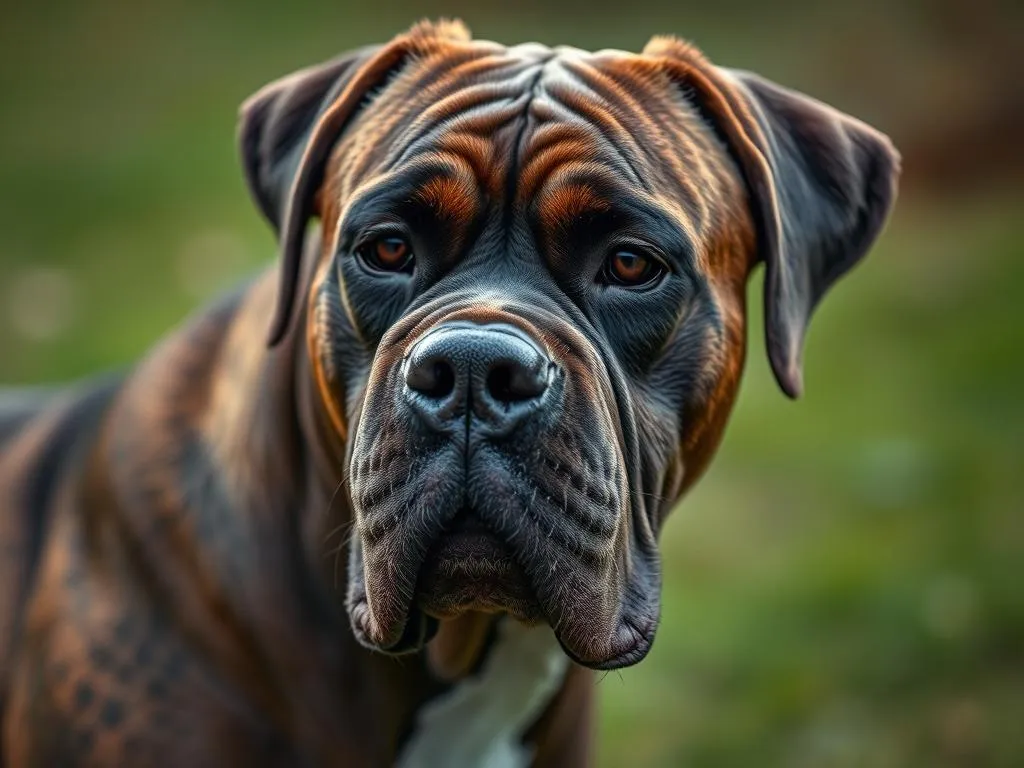
Choosing the right dog breed is essential for any potential dog owner. With so many breeds available, it’s crucial to find one that aligns with your lifestyle, preferences, and family dynamics. Two popular breeds that often come up in discussions are the Cane Corso and the Boxer. Both breeds are known for their loyalty and unique characteristics, but they differ significantly in various aspects. This article delves into a comprehensive comparison to help you decide which breed may be the best fit for your home.
Breed Overview
Cane Corso
The Cane Corso is a powerful and majestic breed that hails from Italy. Originally bred for guarding and herding, this breed has a rich history that dates back to ancient Roman times. The Cane Corso is a descendant of the Roman war dogs and was primarily used for hunting large game and protecting property.
In terms of physical characteristics, the Cane Corso is a large and muscular dog, typically weighing between 90 to 120 pounds and standing 24 to 28 inches tall at the shoulder. Their coat is short, dense, and comes in various colors, including black, fawn, and brindle. Known for their strong jaws and protective instincts, Cane Corsos are naturally intimidating.
When it comes to temperament, Cane Corsos are loyal and protective, often forming strong bonds with their families. They require early socialization and training to ensure they grow into well-rounded adults.
Boxer
The Boxer is a breed that originated in Germany, initially developed for hunting and as a working dog. Boxers are known for their playful nature and strong, muscular build, which makes them a popular choice for families. Their history as versatile working dogs has shaped their friendly and energetic disposition.
Boxers generally weigh between 50 to 80 pounds and stand about 21 to 25 inches tall. Their short coat is smooth and comes in various colors, including brindle, fawn, and white. Boxers are often recognized for their distinctive square muzzle and expressive face.
In terms of temperament, Boxers are known for their playful and affectionate nature. They are highly social dogs that thrive on human interaction and require regular exercise and mental stimulation.
Physical Attributes
Size and Weight
When comparing the size and weight of the Cane Corso and Boxer, the Cane Corso stands out as the larger breed.
- Cane Corso: Average height of 24 to 28 inches, weight ranging from 90 to 120 pounds.
- Boxer: Average height of 21 to 25 inches, weight ranging from 50 to 80 pounds.
The Cane Corso’s bulkiness and strong build make it a formidable presence, while the Boxer, although muscular, is generally more compact and agile.
Appearance
Distinctive physical features set the Cane Corso and Boxer apart.
- Cane Corso: Known for its broad head, strong jawline, and muscular neck. Their ears are often cropped, giving them a more alert appearance.
- Boxer: Characterized by its square muzzle, expressive eyes, and a playful demeanor. Their ears can be cropped or left natural, and they have a more athletic build.
Visually, the Cane Corso has a more intimidating look, while the Boxer exudes a friendly and approachable vibe.
Temperament
Cane Corso Temperament
The Cane Corso is renowned for its loyalty and protective instincts. They are natural guardians, making them excellent watchdogs. However, they require socialization from a young age to ensure they are well-adjusted and comfortable around strangers, children, and other pets.
Cane Corsos can be affectionate with their families but may be reserved with unfamiliar people. They often show a strong protective instinct, especially towards their owners and territory.
Boxer Temperament
In contrast, the Boxer is known for its playful and energetic nature. These dogs are often described as clowns due to their silly antics and boundless energy. Boxers are typically very affectionate and form strong bonds with their families, making them excellent companions for children.
Boxers are friendly and outgoing, but they do require socialization to prevent them from becoming overly boisterous around smaller pets or young children.
Comparative Analysis
When comparing the temperaments of the Cane Corso and Boxer, significant differences emerge. The Cane Corso is more protective and can be aloof with strangers, making them suitable for families looking for a loyal guardian. Conversely, the Boxer is more playful and sociable, making them a great fit for active families or individuals.
Health and Lifespan
Common Health Issues
Both the Cane Corso and Boxer have specific health concerns that potential owners should be aware of:
- Cane Corso: Common health issues include hip dysplasia, heart problems (such as dilated cardiomyopathy), and certain skin conditions. Regular vet check-ups and a healthy diet can help mitigate these risks.
- Boxer: Boxers are prone to certain health issues like cancer, heart disease (especially aortic stenosis), and hip dysplasia. Regular exercise and a balanced diet can contribute to their overall health.
Lifespan
The average lifespan for a Cane Corso is around 9 to 12 years, while the Boxer typically lives between 10 to 12 years. Factors such as diet, exercise, and regular veterinary care significantly affect their lifespan.
Exercise and Training Requirements
Exercise Needs
Both breeds require regular exercise but have different energy levels.
- Cane Corso: Daily exercise should include at least an hour of vigorous activity, such as walking, running, or playing fetch. They thrive in environments where they can engage in physical activity.
- Boxer: Boxers are high-energy dogs requiring at least 60 to 90 minutes of exercise daily. They enjoy playtime and activities that challenge their agility and intelligence.
Training
Training approaches differ for each breed:
-
Cane Corso: They are intelligent but can be stubborn. Positive reinforcement and consistent training methods work best. Early socialization is crucial to prevent behavioral issues.
-
Boxer: Boxers are eager to please and generally respond well to training. They thrive on positive reinforcement and enjoy learning new tricks, making training sessions fun.
Grooming and Maintenance
Grooming Needs of Cane Corso
The Cane Corso has relatively low grooming needs:
- Coat Care: Their short coat requires minimal brushing, about once a week, to remove loose hair.
- Bathing Frequency: Bathing should occur as needed, typically every few months or when they get particularly dirty.
- Nail Trimming and Ear Cleaning: Regular nail trimming and ear cleaning are essential for overall health.
Grooming Needs of Boxer
Boxers also have low grooming requirements:
- Coat Care: Their short coat is easy to maintain; brushing once a week will suffice.
- Bathing Frequency: Similar to Cane Corsos, Boxers should be bathed as needed.
- Nail Trimming and Ear Cleaning: Routine nail trimming and ear cleaning are necessary.
Comparative Grooming Analysis
Both breeds require minimal grooming, making them relatively low-maintenance in this regard. The cost of grooming supplies and services will typically be similar, with occasional variations based on individual needs.
Environmental Needs
Living Space Requirements
When it comes to living space, both breeds have preferences:
- Cane Corso: These dogs thrive in homes with large, secure yards where they can roam and play. Adequate fencing is essential to keep them safe.
- Boxer: Boxers also need space to exercise but can adapt to smaller homes as long as they receive enough daily activity. A secure yard is ideal, but regular walks and playtime are crucial.
Climate Adaptability
Both breeds exhibit adaptability to various climates, but with some caveats:
- Cane Corso: They can tolerate different climates; however, they may struggle in extreme heat due to their thick coat. It’s important to provide shade and water during hot weather.
- Boxer: Boxers are sensitive to extreme temperatures. They flourish in moderate climates but may require extra care in very hot or cold conditions.
Cost of Ownership
Initial Costs
Initial costs can vary between the Cane Corso and Boxer:
- Cane Corso: The purchase price can range from $1,500 to $4,000 depending on the breeder and lineage. Additional costs include vaccinations, microchipping, and initial supplies.
- Boxer: Boxers are generally less expensive, with prices ranging from $700 to $2,500. Similar additional costs apply.
Ongoing Costs
Ongoing costs can also differ based on size and breed-specific needs:
- Cane Corso: Due to their larger size, they typically require more food and larger supplies, leading to higher monthly expenses. Veterinary care might also be more expensive.
- Boxer: While Boxers require a substantial amount of food, their smaller size can mean slightly lower ongoing costs compared to Cane Corsos.
Conclusion
In summary, both the Cane Corso and Boxer offer unique traits and attributes that cater to different lifestyles and family dynamics. The Cane Corso is a loyal guardian that requires consistent training and socialization, while the Boxer is a playful companion that thrives on interaction and activity.
Ultimately, the decision should consider your living environment, energy levels, and family needs. Each breed brings joy and companionship, but understanding their differences can lead to a more fulfilling relationship with your new furry friend.









